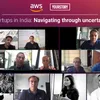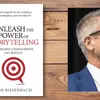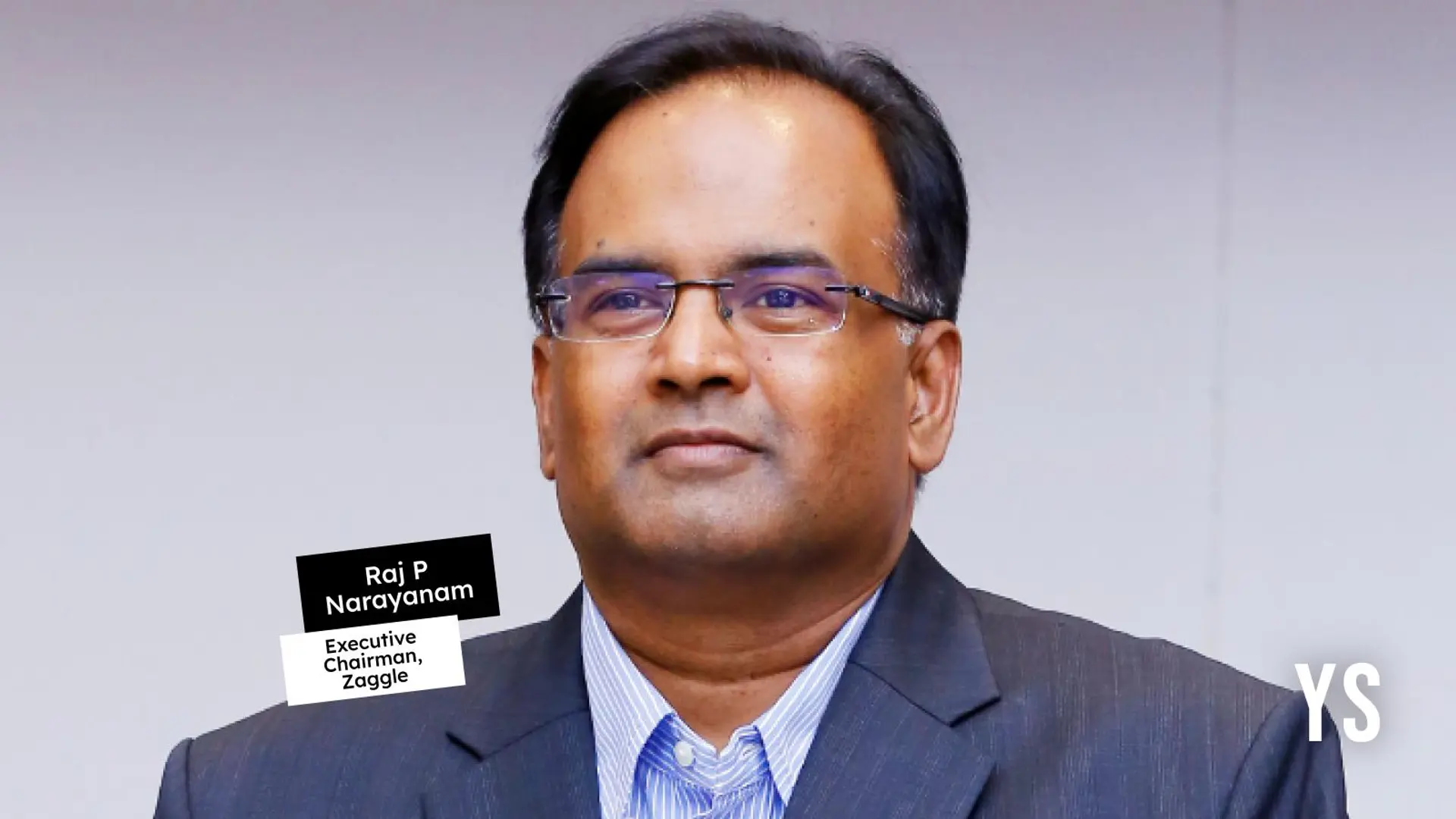From product vision to customer insights: how storytelling is a powerful tool for innovators
Story experts Jean Storlie and Mimi Sherlock share insights on the growing power of stories for changemakers in the pandemic era and beyond.
Jean Storlie and Mimi Sherlock are co-authors of Once Upon an Innovation: Business Storytelling Techniques for Creative Problem Solving (see my book review here). Combining business communication and creativity, the book shows how story approaches can be embedded throughout innovation, from visioning products to understanding customers.
Jean Storlie is the owner and president of Storlietelling, and was earlier at General Mills. Mimi Sherlock is the Director of Global Strategic Insights for IFF Taste and was the owner of Sherlock Creative Thinking. The two met at the 2014 Creative Problem Solving Institute (CPSI) conference and built on their complementary strengths for this book.
In this chat with , the authors talk about the journey of an innovator, the power of failure stories, storytelling in the pandemic era, and the business impact of storytelling.
Edited excerpts from the interview:
YourStory: What is your current field of work in storytelling?
Mimi Sherlock (MS): I lead innovation for IFF, a global food ingredient supplier. My team and I use storytelling in consumer research to gather insights and also in engaging internal teams and customers in innovation processes.
Jean Storlie (JS): Through my consulting business, I design and facilitate processes to help business teams solve problems: strategic, innovation, marketing/communications, technical, and organisational. My approach combines analytical rigour with stories and story-based techniques to spark imagination and creative thinking.
YS: How was your book received? What were some of the unusual responses and reactions you got?
JS and MS: Due to the COVID-19 pandemic, we had to scrap our launch plans and pivot – like everyone else. Fortunately, the book release coincided the Creative Problem Solving Institute (CPSI) Virtual Conference in June. Our two-part virtual session based on the book was well-received and many conference participants ordered the book. The outpouring of praise and congratulations from our creative colleagues was validating.
We’ve been surprised with the interest among college students and educators. Also, we are engaging with several non-profit organisations that are applying some of the techniques. In July, we launched a private Facebook group for readers, and within a month over 80 members joined.
YS: What role does storytelling play in the pandemic era? What are some outstanding practices you have seen in this regard?
MS: The health and economic havoc raised by COVID-19 requires businesses of all sizes to pivot, problem solve, and quickly adapt. Once Upon an Innovation is grounded in tried-and-true methods for creative problem solving and innovation, which can help business leaders navigate change.
Story sharing in combination with these methods can yield better insights, which are at the heart of innovation. As an antidote for long days in front of a computer with limited opportunities for casual conversations, storytelling provides a simple way for co-workers to connect with each other and cope with isolation.
JS: COVID-19 has sparked a new wave of empathy. We use story listening to gain a 360-degree perspective on a problem. Eliciting stories from customers, employees, suppliers, business partners – even critics – will shed new light on problems and opportunities. Stories impart wisdom and empathy from different points of view that collectively reveal patterns and possibilities. They help to make sense of data and trigger viable solutions.
YS: In the time since your book was published, what are some notable new cases you have come across that would extend the material in the book?
JS and MS: The rapid adaption to conducting business virtually has had the biggest impact on our field. We have adapted many of the tools and techniques in the book for virtual delivery. Our experience is that stories and storytelling can transform virtual – as well as live – events in powerful ways.
During virtual business meetings, it’s easy to focus on analytical tasks like sharing information, setting goals, and tracking progress. But it is harder to make human connections and engage in imaginative thinking. We need both analytical and creative thinking when solving problems. So, we see a lot of potential to further develop how to apply storytelling to virtual business meetings.
Another book that’s not necessarily new, but we discovered it too late to incorporate is Ten Faces of Innovation, by Tom Kelly. He delves into ten roles people play in an organisation to foster innovation. This material would augment our discussions about stakeholder engagement in Chapters 6 and 7.

Jean Storlie (L), Mimi Sherlock (R)
YS: How big a role do academics play in innovation and entrepreneurship? Can entrepreneurship really be formally taught?
JS and MS: We both “grew up” as innovation practitioners in the school of hard knocks. But we observe a lot of leadership in the innovation field coming out of universities. Our professional home, the Creative Education Foundation (the organisation that runs the CPSI) was founded by an academic (Sid Parnes) and an advertising executive (Alex Osborn).
Sid Parnes also founded the International Center for Creative Studies at SUNY-Buffalo, which is often referred to as the mecca for creativity. Stanford’s dSchool has played a pivotal role in the widespread adoption of design thinking.
Now most business and design schools around the world offer courses in design thinking. And creative problem solving principles are embedded in the curricula of many fields, such as engineering. We believe that innovation and entrepreneurship stem from a mindset, and some people gravitate toward it naturally. But the principles, skills, methods, and techniques can be taught.
YS: How should innovators strike that delicate balance between ‘Stick to your vision’ and ‘Adapt to a changed world’?
JS and MS: We believe that you have to do both. Remain nimble enough to capture opportunities and mitigate risks, but not get whiplashed around reacting to every situation that emerges. We like to think about a vision as your “true north,” the compass point that keeps you focused on your dream.
If your vision is grounded in solid insights (perhaps even, universal truths), it will be more resilient to changing circumstances. Then stay open to different paths and opportunities to achieve the vision.
The COVID-19 social and economic disruptions illustrate the importance of nimbleness. Companies that quickly pivoted to rework their supply chains, retool factories, and modify how they deliver goods and services profited during this crisis. Those that were too rigid have suffered.
YS: Is there such a thing as the ‘ideal age’ for a changemaker, or can the innovation bug strike you at any time? How should people keep themselves open for adopting a creative career later in life?
JS and MS: No ideal age. One of Jean’s colleagues, Tyler Olson, started his first business fixing computers when he was 12 years old. He eventually got a college degree in entrepreneurship and has started several businesses.
We see graduate students start their careers as innovators, but also know colleagues who made mid-career changes, leaving corporate jobs and becoming entrepreneurs. Staying curious throughout life fuels the innovation spirit.
One of our colleagues, Sally Fox, is dedicating herself to creativity during the second half of life. She interviewed Jean for her Vital Presence podcast that explores this topic with a wide range of guests.
YS: Stories are often confused with ‘narratives’, which are larger arcs with stories embedded in them. What are some ways in which such narratives can be developed and communicated by organisations?
JS and MS: For the book, we use story and narrative interchangeably. Our definition is grounded in Paul Zak’s research on the neuroscience of storytelling. Zak found that a “good story” changes brain chemistry if it has key “narrative” elements: character, struggle, and emotional transformation.
In the US, the term “narrative” is used widely — in different contexts with different meanings. Some people use narrative for material that is presented as prose (e.g., consumer narrative, narrative argument). For example, Jeff Bezos replaced PowerPoint presentations with six-page narratives to communicate business recommendations at Amazon.
Political pundits say, “he changed the narrative” or “grabbed the narrative,” when a politician creates a distraction that causes people to pay attention to something else. In the corporate setting, business teams strategise about how to “own the narrative” for a category or consumer need. Their goal is to create a viral conversation that is favorable to the brand.
In many of these ‘narratives’, no story is told. We are concerned that the term ‘narrative’ is becoming confusing and problematic.
That said, the concept of smaller stories embedded in a larger arc has many applications. For example, during visioning and strategy sessions, we facilitate a process in which team members start with crafting “my story” and ladder up to “our story.”
Other business storytellers frame this concept as the “Little Story” (key insights) versus the “Big Story” (master strategy). We think the concept has merit, but the semantic could be confusing.
YS: What are some challenges in telling and sharing ‘failure stories’? How can individuals and organisations nurture this important capability?
JS and MS: People are afraid of showing vulnerability, so they naturally shy away from failure stories. But sharing these stories and harvesting lessons from them is a powerful way to learn and grow.
We like to lead simple brainstorming discussions around two questions: “What worked?” and “What didn’t?” Even failures have successful elements and recognising them first makes it easier for teams to think critically about what didn’t work.
In design thinking, which employs rapid prototyping and “failing fast” through an iterative approach, failures are crucial steps in the journey. Aristotle’s wise words inspire us to lean into failure: “To avoid criticism, say nothing, do nothing, be nothing.” These stories become new insights and challenges that fuel innovation.
YS: It’s one thing to fail with a product, and a bigger dimension to fail with a company. How should changemakers regroup and recover in these two situations?
JS and MS: In the case of a failed product, the company may still remain viable. Nike’s Chief Storytelling Officer, Nelson Farris, often talks about how sharing stories about the company’s failure is integral to the company’s success because these stories provide lessons for the future.
In the case of a failed company, the consequences are much more severe for founders, employees, investors, suppliers, and other partners. Everyone affected will go through a transition journey in which a healing story or recovery/reinvention story may help them cope.
YS: How should changemakers evaluate weak signals and anecdotal evidence which seem to contradict quantitative market trends?
JS and MS: Weak signals are early signs of emerging trends, and they may not show up in quantitative data. Weak signals illuminate future possibilities and can inform long-term strategies. Whereas, quantitative data helps to prepare for now.
Different findings between observational/anecdotal studies and quantitative data may not be as contradictory as they appear on the surface. Bear in mind that quantitative data is not always accurate. For example, flaws in sampling or questionnaire design might skew the results and miss key information.
Weak signals may be muted from data compilations and averages. Such contradictions might point to profound insights that would be missed if you only rely on one source of data. We think that you need to triangulate all the sources of data to get the best insights.
YS: In terms of metrics for return on investment (RoI) for storytelling, what are the implications for budget, hiring professional storytellers, and measuring impact?
JS: Stories naturally emerge during ethnography, focus groups, and other qualitative research. Story listening and story curating is a skill that the researchers can hone so they capture stories while doing the work they already do. Our approach is to weave story techniques into tried-and-true innovation models, so it’s hard to tease out impact of the stories versus these models.
We don’t think that it’s necessary to hire a professional storyteller to use story techniques in research and innovation. This type of storytelling is different than professional storytelling for entertainment – researchers are not creating the next “Star Wars”.
MS: In my role as the global director of insights and innovation, I never think about a separate budget for capturing stories vs. other research. It’s all together – capture the stories that emerge doing our traditional work. I guide my team to deliberately elicit stories.
Calculating the RoI on stories would be like calculating the effect of specific survey questions versus interviews. To me, the RoI of including stories in the research mix come down to closing the empathy gap faster.
Telling a story versus presenting reams of data provides clarity and understanding among stakeholders so they can make decisions more quickly. Speed translates into financial savings, but I don’t have hard and fast data on this.
YS: Looking outside Western countries, what are some interesting traits you observe in storytelling in different cultures? How can these be adapted by innovators elsewhere?
JS and MS: Although we’ve had limited experience with storytelling in non-Western cultures, we believe that human interest in stories is universal. But the ways stories are told and the specific tales vary from culture to culture. For centuries and across cultures, societies use stories to convey knowledge, values, and wisdom from one generation to another. In a way, stories weave the threads of a culture together into a cohesive whole.
We like to clarify and gain insights about specific innovation challenges by curating stories from a kaleidoscope of perspectives: stakeholders, users, competitors, suppliers, and partners. Innovators in non-Western cultures could apply the same approach to understand their unique challenges and build solutions that address insights these stories uncover.
YS: What is your next book going to be about?
JS and MS: Ha! Ha! It’s too soon for us to ponder that challenge!
YS: What is your parting message to startups and aspiring innovators in our audience?
MS: The power of stories will not let you down.
JS: Combine analytical rigor plus wild imagination.
Edited by Megha Reddy





![[Year in Review 2019] From setback to success – top quotes on failure and resilience](https://images.yourstory.com/cs/2/28b451402d6a11e9aa979329348d4c3e/--K-Vaitheeswaran-Again-Drinks-1577690024487.png?fm=png&auto=format&h=100&w=100&crop=entropy&fit=crop)





